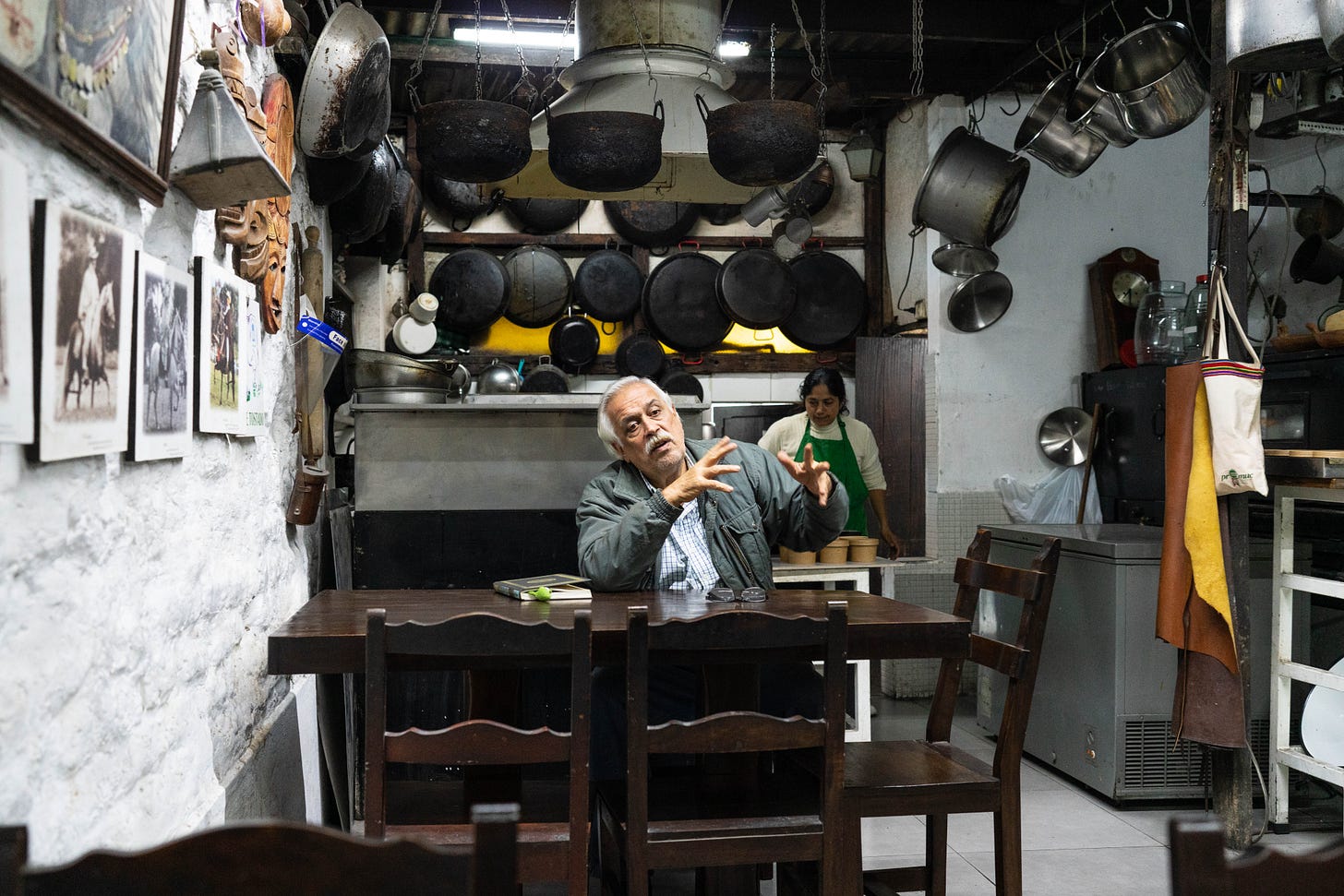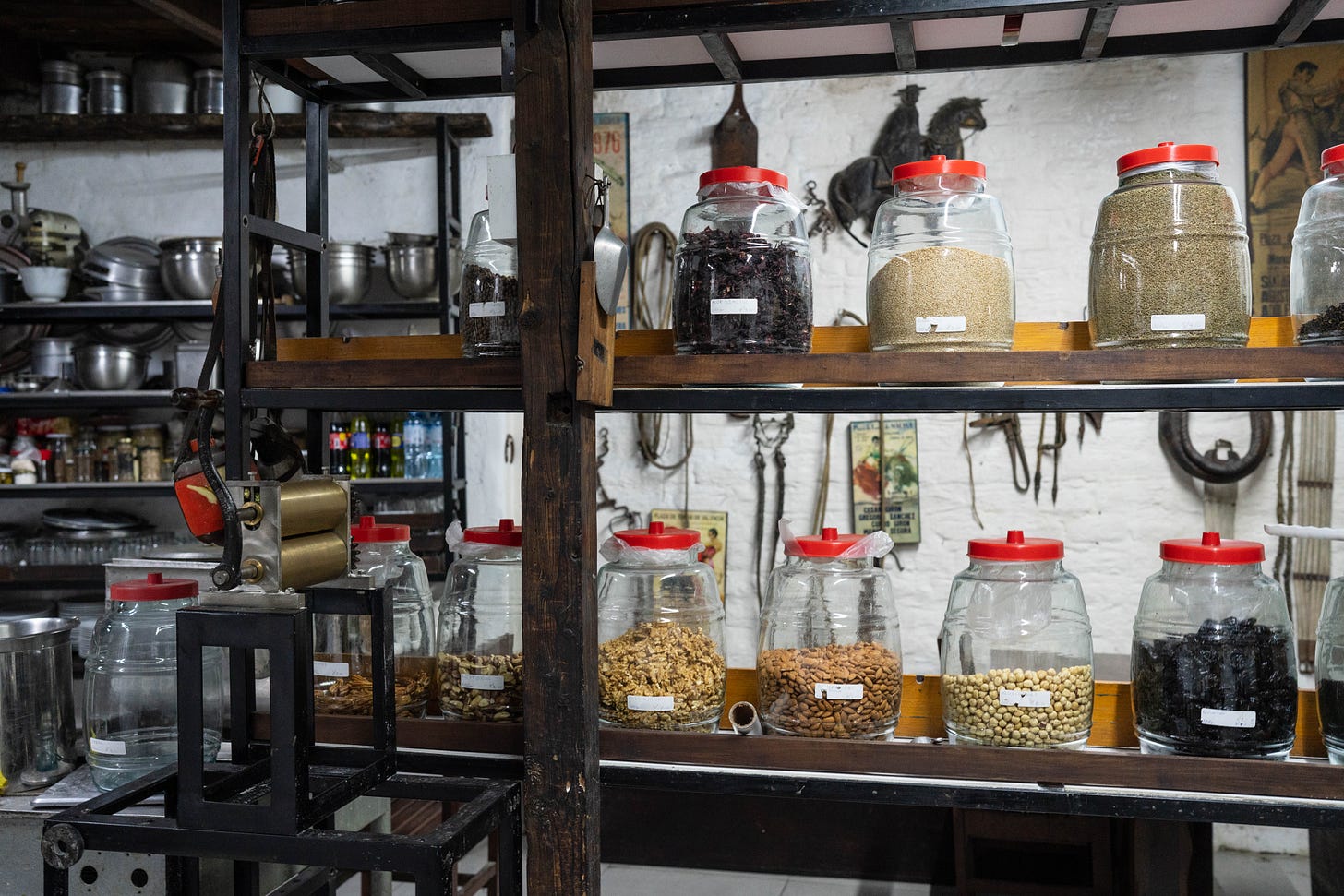Barranco's Cafe Tostado
A Restaurant that Doesn't Need a Menu
Cafe Tostado was one of the first restaurants that I got to know in Lima. It’s a little odd to even refer to Cafe Tostado as a restaurant. It’s largely the work of one man, Pepe Giuffra, the owner and chef who prepares one or two dishes a day (with the help of a couple of assistants). There’s no written menu, just a rotating lineup. When he doesn’t have customers, he’s making pasta which hangs on racks along the wall for three days until it’s dried enough to sell.
The fried rabbit and sweet potato cooked in orange juice that I had on my first visit is his signature dish. Based on his own recipe, it’s not a classic “criollo” dish and thus you can’t order it anywhere else.
The rabbit and sweet potatoes are perfectly fried. The vinegar and red onion sauce that accompanies it only has three or four ingredients, but I immediately could taste that the vinegar was unlike any other vinegar I tasted. A quick exchange with Giuffra who moved to a table across from us to talk to us confirms that this vinegar, like everything else served, is homemade. An engineer in a former life, Giuffra even designed the machines he uses to make pasta.
Second-generation Italian Peruvian, Giuffra cooks seven days a week, just two blocks from where he went to grade school. He only takes cash and relies on word-of-mouth over social media. He is not looking to make a big profit or to dramatically grow his business. He explains matter-of-factly that any extra money he earns would just simply be used to buy more ingredients and equipment for the restaurant.
Along the walls, you can get a glimpse of the place’s rich history. On one side, there’s a pantry that you can tell has gradually expanded into the dining area. On the opposite wall, there’s a collage of old photos covering the wall, except the space set aside for drying pasta. Close to the entrance, you can see a cluster of photos with illustrations of rabbits and then a photo of Giuffra with a giant rabbit, a sly nod to Cafe Tostado’s signature rabbit dish.
Giuffra is always eager to share stories and his knowledge. On my first visit, I went to the back of the restaurant to watch him cook. I didn’t know any Spanish at that point. However, he could see questions in my eyes. He was eager to explain, but knowing that there was a language barrier, he called his son to come to translate. His son, Paolo, gave me a whirlwind overview of Peru’s culinary landscape and told me that if I truly wanted to understand Peruvian food I needed to visit the jungle. I eventually did, and he was right. Many more stories about the food in the jungle to come.
Though they’ve chosen to specialize in their specific niches, both father and son have an intricate knowledge of Peruvian cuisine. After explaining that Cafe Tostado does not offer desserts, Giuffra spent the next fifteen minutes describing classic Peruvian desserts and his opinions of how they should be made.
Cafe Tostado is a remnant of the old Barranco, the neighborhood that was before Barranco became touted in travel magazines as the “must-visit hipster neighborhood.1” It is a harique, the term used to describe small restaurants that are bastions of traditional cuisine.
Eating at Cafe Tostado felt like I was eating at a friend’s grandfather’s home. My first dinner at Cafe Tostado, more than five years ago, and all subsequent meals there felt like what travel would be like if you had the benefits of knowing exactly where to go but without hordes of other travelers going to the exact same place. Dinner came with a conversation and an explanation of the cuisine aimed not for TV cameras, but for an audience of one curious eater.

Thank you to Mariela Orjeda for her help translating my most recent conversation with Pepe Giuffra
The more time I spend in Barranco, the more I think the way it is presented in guidebooks is a bit misleading. Sure, there are coffee shops, street art, and boutique shops. But between these hipster highlights are beautiful old buildings and a lot of history.






I never heard about this rabbit dish! I'm going to have to check this out!